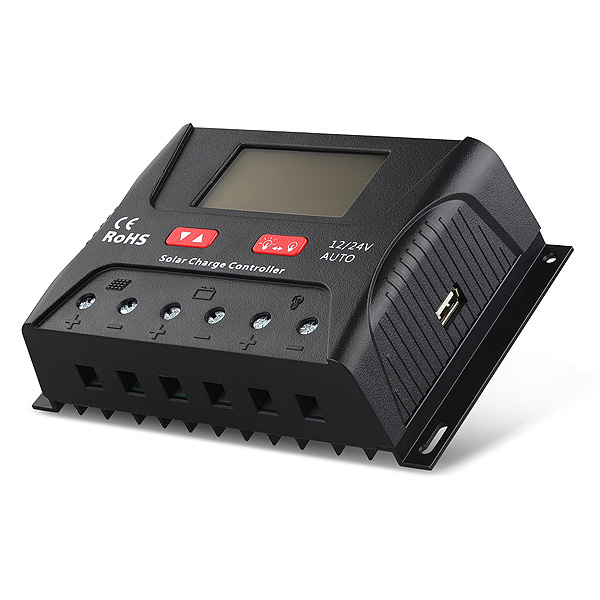Within a week, the four major cloud business giants released earnings reports. Amazon's cloud business (AWS) is still at the forefront, ranking first with $17.4 billion.
Microsoft, Google, and Alibaba have not slowed down. Alibaba Cloud's accumulated revenue last year exceeded 10 billion; Microsoft's Azure cloud business grew 98% in the latest quarter; and in Google, cloud computing has become one of the second wave of growth after advertising revenue.
Market analysts believe that in the fourth quarter of 2017, the cloud computing market grew by 46% over the same period last year, largely driven by the growth of the four giants. But because of this, the market oligopoly of cloud computing is becoming more and more obvious.
Four strong competition for the cloud market
According to Amazon's latest earnings report, AWS net sales were $5.1 billion in the fourth quarter of last year. In the previous quarters, it was $3.661 billion, $4.1 billion, and $4.584 billion. In this calculation, AWS's net sales last year reached $ 17.4 billion.
Amazon Chief Financial Officer Orsavski mentioned in the earnings analyst's conference call that AWS's current usage growth is very strong, and usage growth continues to be strong, which is much higher than the company's revenue growth rate, and Customers continue to increase their load.
Amazon's competitor Alibaba in China released its Q4 2017 earnings report before the US stock market on February 1. The cloud business is also accelerating. The data shows that Alibaba's revenue in the quarter increased by 104% year-on-year to 3.599 billion yuan. In the previous three quarters, the quarterly revenue of this business was 2.163 billion, 2.431 billion and 2.975 billion yuan. Based on this calculation, Alibaba Cloud's revenue reached 11.2 billion yuan last year.
The earnings report of Google's parent company Alphabet last Friday showed that in the fourth quarter of 2017, total revenue of Alphabet was 32.323 billion US dollars, up 24% from the previous year's 26.064 billion US dollars. Hardware and cloud computing have become Google's second wave of growth after advertising revenue. At the earnings conference, Google CEO Sundar Picha first disclosed Google Cloud-related revenue. Pichay said that Google's cloud computing platform and G Suite for work applications now generate $1 billion in revenue per quarter, equivalent to $4 billion a year. However, even so, cloud computing currently accounts for only 3.1% of Google's total revenue.
According to public data, the Google Cloud Service Platform is the world's fastest-growing major public cloud service platform in 2017.
On February 1, Beijing time, Microsoft also released the second quarter financial report for the 2018 fiscal year. Microsoft's revenue for the quarter was $28.918 billion, an increase of 12% over the same period last year. In the quarter, Microsoft's smart cloud business revenue of 7.8 billion US dollars, an increase of 15%. Among them, Azure cloud business growth rate is as high as 98%.
Microsoft CEO Satya Nadella said: "Our investment in the Internet of Things, big data and artificial intelligence on the cloud platform has become a core advantage that drives our continued growth."
Different Chinese strategies
At the 2017 Microsoft Technology and Ecology Conference held in November last year, Nadella also fully demonstrated the ambition of Microsoft Cloud in the Chinese market. According to Nadella, Microsoft Cloud Azure will expand three times in the next six months, and services such as AzureStack Hybrid Cloud and SQLServer2017 will be launched in China.
Azure has to expand its capacity in China by three times in half a year, while Google is absent from the Chinese mainland market. Also in November last year, Google announced that Hong Kong will officially become a new area of ​​the Google Cloud Platform (GCP), which was officially launched in 2018. Hong Kong is also the sixth cloud region in the Asia Pacific region following Singapore, Sydney, Taiwan, Tokyo and Mumbai. However, because there is no cloud service area in mainland China, there are certain obstacles for Google to provide cloud services to enterprises.
There are also AWSs that have experienced some twists and turns. In 2013, Amazon's previous store model was launched in China, with Beijing as its predecessor and Ningxia Zhongwei as a post-factory. IDC and ISP were provided by Halo New Network and NetScience. However, later, because the partner Halo new network has not received the cloud computing operation license, AWS had to sell the physical infrastructure to the optical network to "curve compliance." Subsequently, AWS began cooperation with Ningxia Xiyun Data.
However, the good news is that at the end of last year, Halo New Network finally obtained the “Value-added Telecom Business License†issued by the Ministry of Industry and Information Technology. This also means that AWS is expected to land in the Chinese market in a short period of time.
Compared with the above, Alibaba Cloud's promotion in the Chinese market will obviously be much smoother. According to data released by IDC, Alibaba's IaaS revenue in the first half of 2017 was US$500 million, accounting for 47.6% of the Chinese market. Last year, Alibaba Cloud and China Unicom announced that they would open up their cloud computing resources. On February 1 this year, the cooperation between the two companies was upgraded. The “Woyun PoweredbyAlibabaCloud†cloud platform was launched and announced to all 31 Unicom companies in Unicom.

Market is getting more concentrated
According to the latest data from market research firm Synergy Research Group, in the fourth quarter of 2017, the cloud computing infrastructure services market grew by 46% year-on-year to reach $13 billion, exceeding the growth rate of the first three quarters.
The agency believes that, to a large extent, the rapid expansion of the cloud market is driven by the rapid growth of AWS, Microsoft Azure, Google Cloud and Alibaba Cloud. Despite Microsoft's tremendous progress, AWS has maintained its dominance, with revenues surpassing the sum of the next four nearest competitors.
According to data from SynergyResearchGroup and another market analysis company, Canalys, Amazon Q4 is still the main cloud provider of the season in Q4 2017, accounting for 32% of the global market. Microsoft, Google and IBM accounted for 14%, 8% and 4% of the market respectively, and Alibaba Cloud accounted for 3% to 4%. The five companies together account for 60% of the global market share.
Synergy chief analyst and research director John Dinsdale said: "We previously expected cloud computing growth to increase at the end of 2017, but the data performance is stronger than expected, indicating how strong the market drivers. With the cloud service Demand is growing, leading cloud service providers should be satisfied, and the intensity of their competition is inaccessible to most companies.†He believes that small businesses can still do it in vertical industries or in certain regions by focusing on specific applications. Better, but in general, only big players who are not bad money can play well.
Market monopoly is further exacerbated. A previous report by Goldman Sachs predicts that by 2019, the market share of small and medium cloud computing vendors will shrink from 25% to 2% today. The future cloud computing market will be oligopoly by Amazon AWS, Microsoft Cloud, Google Cloud and Alibaba Cloud. .
A solar Controller is an electronic device that controls the circulating pump in a solar hot water system to harvest as much heat as possible from the solar panels and protect the system from overheating.
Two kinds solar controller included:
1.PWM Controller
PWM stands for Pulse Width Modulation. PWM charge control devices can be explained as an electrical switch between batteries. The switch can be quickly switch on and switch off. Therefore, desired voltage can be obtained to charge the batteries. The charge current will be slowly decreased as the batteries charged.

Lithium Battery Pwm,Pwm Solar Charge Controller,Home Solar Controller Cost ,20A Pwm Controller
NANTONG RONGCHANG IMPORT&EXPORT CO.,LTD , https://www.ergsolarcn.com
